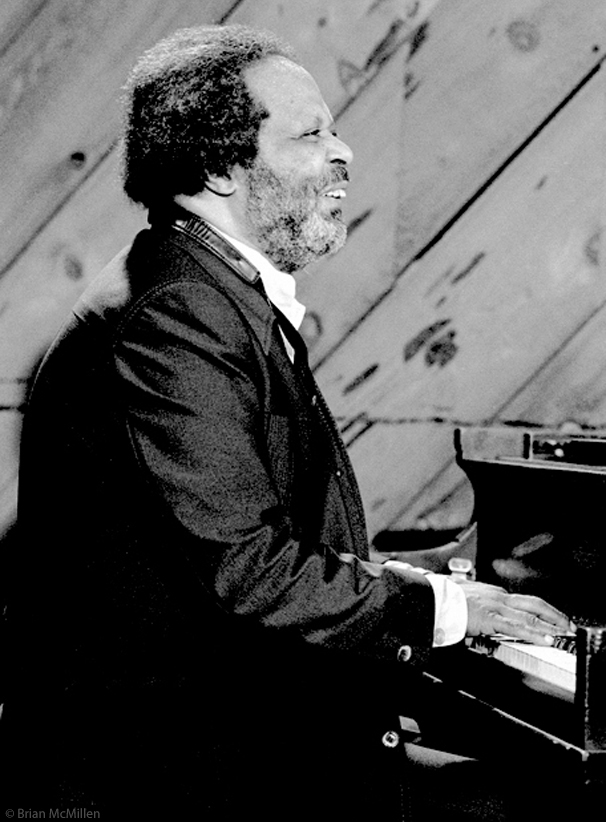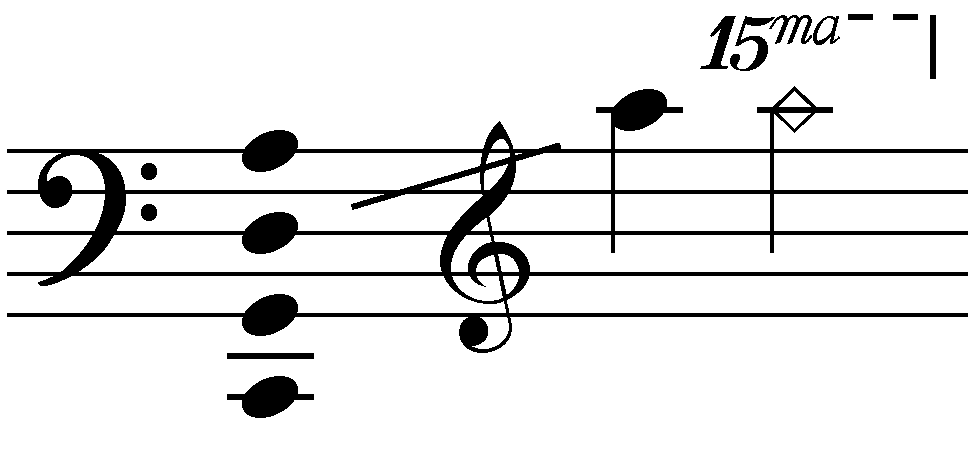|
Jaki Byard With Strings!
''Jaki Byard with Strings!'' is an album by pianist Jaki Byard recorded in 1968 and released on the Prestige label. It is a sextet recording, with George Benson (guitar), Ray Nance (violin and vocals), Ron Carter (cello), Richard Davis (double bass), and Alan Dawson (drums and vibraphone). Music Critic Gary Giddins commented that, "a few complicated arrangements notwithstanding, this album is mostly an upbeat jam".Giddins, Gary (2004) ''Weather Bird: Jazz at the Dawn of Its Second Century'', p. 224. Oxford University Press. One of the complicated arrangements was "Cat's Cradle Conference Rag" – each of five musicians "play five standards based on similar harmonies simultaneously". With the drummer added, these were: "Take the A Train" (Byard); "Jersey Bounce" (Nance); "Darktown Strutters' Ball" (Benson); "Intermission Riff" (Davis); "Desafinado" (Carter); and "Ring Dem Bells" (Dawson). Reception Allmusic awarded the album 4 stars with its review by Scott Yanow, stating, "The r ... [...More Info...] [...Related Items...] OR: [Wikipedia] [Google] [Baidu] |
Jaki Byard
John Arthur "Jaki" Byard (; June 15, 1922 – February 11, 1999) was an American jazz multi-instrumentalist, composer, and arranger. Mainly a pianist, he also played tenor and alto saxophones, among several other instruments. He was known for his eclectic style, incorporating everything from ragtime and stride to free jazz. Byard played with trumpeter Maynard Ferguson in the late 1950s and early 1960s, and was a member of bands led by bassist Charles Mingus for several years, including on several studio and concert recordings. The first of his recordings as a leader was in 1960, but, despite being praised by critics, his albums and performances did not gain him much wider attention. In his 60-year career, Byard recorded at least 35 albums as leader, and more than 50 as a sideman. Byard's influence on the music comes from his combining of musical styles during performance, and his parallel career in teaching. From 1969 Byard was heavily involved in jazz education: he began teac ... [...More Info...] [...Related Items...] OR: [Wikipedia] [Google] [Baidu] |
Allmusic
AllMusic (previously known as All-Music Guide and AMG) is an American online music database. It catalogs more than three million album entries and 30 million tracks, as well as information on musicians and bands. Initiated in 1991, the database was first made available on the Internet in 1994. AllMusic is owned by RhythmOne. History AllMusic was launched as All-Music Guide by Michael Erlewine, a "compulsive archivist, noted astrologer, Buddhist scholar and musician". He became interested in using computers for his astrological work in the mid-1970s and founded a software company, Matrix, in 1977. In the early 1990s, as CDs replaced LPs as the dominant format for recorded music, Erlewine purchased what he thought was a CD of early recordings by Little Richard. After buying it, he discovered it was a "flaccid latter-day rehash". Frustrated with the labeling, he researched using metadata to create a music guide. In 1990, in Big Rapids, Michigan, he founded ''All Music Guid ... [...More Info...] [...Related Items...] OR: [Wikipedia] [Google] [Baidu] |
Cello
The cello ( ; plural ''celli'' or ''cellos'') or violoncello ( ; ) is a Bow (music), bowed (sometimes pizzicato, plucked and occasionally col legno, hit) string instrument of the violin family. Its four strings are usually intonation (music), tuned in perfect fifths: from low to high, scientific pitch notation, C2, G2, D3 and A3. The viola's four strings are each an octave higher. Music for the cello is generally written in the bass clef, with tenor clef, and treble clef used for higher-range passages. Played by a ''List of cellists, cellist'' or ''violoncellist'', it enjoys a large solo repertoire Cello sonata, with and List of solo cello pieces, without accompaniment, as well as numerous cello concerto, concerti. As a solo instrument, the cello uses its whole range, from bassline, bass to soprano, and in chamber music such as string quartets and the orchestra's string section, it often plays the bass part, where it may be reinforced an octave lower by the double basses. Figure ... [...More Info...] [...Related Items...] OR: [Wikipedia] [Google] [Baidu] |
Vocals
Singing is the act of creating musical sounds with the voice. A person who sings is called a singer, artist or vocalist (in jazz and/or popular music). Singers perform music (arias, recitatives, songs, etc.) that can be sung with or without accompaniment by musical instruments. Singing is often done in an ensemble of musicians, such as a choir. Singers may perform as soloists or accompanied by anything from a single instrument (as in art song or some jazz styles) up to a symphony orchestra or big band. Different singing styles include art music such as opera and Chinese opera, Indian music, Japanese music, and religious music styles such as gospel, traditional music styles, world music, jazz, blues, ghazal, and popular music styles such as pop, rock, and electronic dance music. Singing can be formal or informal, arranged, or improvised. It may be done as a form of religious devotion, as a hobby, as a source of pleasure, comfort, or ritual as part of music educ ... [...More Info...] [...Related Items...] OR: [Wikipedia] [Google] [Baidu] |
Violin
The violin, sometimes known as a ''fiddle'', is a wooden chordophone (string instrument) in the violin family. Most violins have a hollow wooden body. It is the smallest and thus highest-pitched instrument (soprano) in the family in regular use. The violin typically has four strings (music), strings (some can have five-string violin, five), usually tuned in perfect fifths with notes G3, D4, A4, E5, and is most commonly played by drawing a bow (music), bow across its strings. It can also be played by plucking the strings with the fingers (pizzicato) and, in specialized cases, by striking the strings with the wooden side of the bow (col legno). Violins are important instruments in a wide variety of musical genres. They are most prominent in the Western classical music, Western classical tradition, both in ensembles (from chamber music to orchestras) and as solo instruments. Violins are also important in many varieties of folk music, including country music, bluegrass music, and ... [...More Info...] [...Related Items...] OR: [Wikipedia] [Google] [Baidu] |
Guitar
The guitar is a fretted musical instrument that typically has six strings. It is usually held flat against the player's body and played by strumming or plucking the strings with the dominant hand, while simultaneously pressing selected strings against frets with the fingers of the opposite hand. A plectrum or individual finger picks may also be used to strike the strings. The sound of the guitar is projected either acoustically, by means of a resonant chamber on the instrument, or amplified by an electronic pickup and an amplifier. The guitar is classified as a chordophone – meaning the sound is produced by a vibrating string stretched between two fixed points. Historically, a guitar was constructed from wood with its strings made of catgut. Steel guitar strings were introduced near the end of the nineteenth century in the United States; nylon strings came in the 1940s. The guitar's ancestors include the gittern, the vihuela, the four-course Renaissance guitar, an ... [...More Info...] [...Related Items...] OR: [Wikipedia] [Google] [Baidu] |
Electronic Organ
An electric organ, also known as electronic organ, is an electronic keyboard instrument which was derived from the harmonium, pipe organ and theatre organ. Originally designed to imitate their sound, or orchestral sounds, it has since developed into several types of instruments: * Hammond-style organs used in pop, rock and jazz; * digital church organs, which imitate pipe organs and are used primarily in churches; * other types including combo organs, home organs, and software organs. History Predecessors ;Harmonium The immediate predecessor of the electronic organ was the harmonium, or reed organ, an instrument that was common in homes and small churches in the late 19th and early 20th centuries. In a fashion not totally unlike that of pipe organs, reed organs generate sound by forcing air over a set of reeds by means of a bellows, usually operated by constantly pumping a set of pedals. While reed organs have limited tonal quality, they are small, inexpensive, se ... [...More Info...] [...Related Items...] OR: [Wikipedia] [Google] [Baidu] |
Piano
The piano is a stringed keyboard instrument in which the strings are struck by wooden hammers that are coated with a softer material (modern hammers are covered with dense wool felt; some early pianos used leather). It is played using a musical keyboard, keyboard, which is a row of keys (small levers) that the performer presses down or strikes with the fingers and thumbs of both hands to cause the hammers to strike the strings. It was invented in Italy by Bartolomeo Cristofori around the year 1700. Description The word "piano" is a shortened form of ''pianoforte'', the Italian term for the early 1700s versions of the instrument, which in turn derives from ''clavicembalo col piano e forte'' (key cimbalom with quiet and loud)Pollens (1995, 238) and ''fortepiano''. The Italian musical terms ''piano'' and ''forte'' indicate "soft" and "loud" respectively, in this context referring to the variations in volume (i.e., loudness) produced in response to a pianist's touch or pressure on ... [...More Info...] [...Related Items...] OR: [Wikipedia] [Google] [Baidu] |
Morgan Lewis (songwriter)
William Morgan "Buddy" Lewis, Jr. (26 December 1906 – 8 December 1968) was a writer of jazz songs, some of which were also recorded in the pop music genre. Lewis was born in Rockville, Connecticut, Rockville, Connecticut and died in New York City. He wrote songs and Broadway theatre scores with lyricist Nancy Hamilton including "How High the Moon" and "The Old Soft Shoe". Selected work ;Songs * "At Last It's Love" * "Cause You Won't Play House" * "Fool for Luck" * "A House with a Little Red Barn" * "How High the Moon" * "I Only Know" * "If It's Love" * "A Lovely, Lazy Kind of Day" * "Oh, You're a Wonderful Person" * "The Old Soft Shoe" * "Teeter Totter Tessie" * "Two Can Dream the Same Dream" * "The Yoo Hoo Blues" ;Broadway theatre scores * ''New Faces of 1934'' (1934); music also by others * ''One For the Money'' (1939) * ''Two for the Show (musical), Two for the Show'' (1940) * ''Three to Make Ready'' (1946) ;Film scores * ''Helen Keller in Her Story, The Unconquered'' (''He ... [...More Info...] [...Related Items...] OR: [Wikipedia] [Google] [Baidu] |
Nancy Hamilton
Nancy Hamilton (July 27, 1908 - February 18, 1985) was an American actress, playwright, lyricist, director and producer. Early life and education Nancy Hamilton was born in Sewickley, Pennsylvania on July 27, 1908, daughter of Charles Lee Hamilton and Margaret Miller Marshall. She was educated at Miss Dickinson's School in Sewickley, at the Sorbonne, and received a B.A. from Smith College in 1930. At Smith, Hamilton was active in the theater and was president of the school's Dramatic Association her senior year. She caused a bit of a scandal at the college with ''And So On'', a topical revue that she wrote and directed. Billy J. Harbin, Kim Marra and Robert A. Schanke, in their book ''The Gay & Lesbian Theatrical Legacy: A Biographical Dictionary of Major Figures in American Stage History in the Pre-Stonewall Era'', wrote "She amiltonhad received special permission from the president of this women's college to hire men to play in the show's orchestra. On opening night the audie ... [...More Info...] [...Related Items...] OR: [Wikipedia] [Google] [Baidu] |


.jpg)


